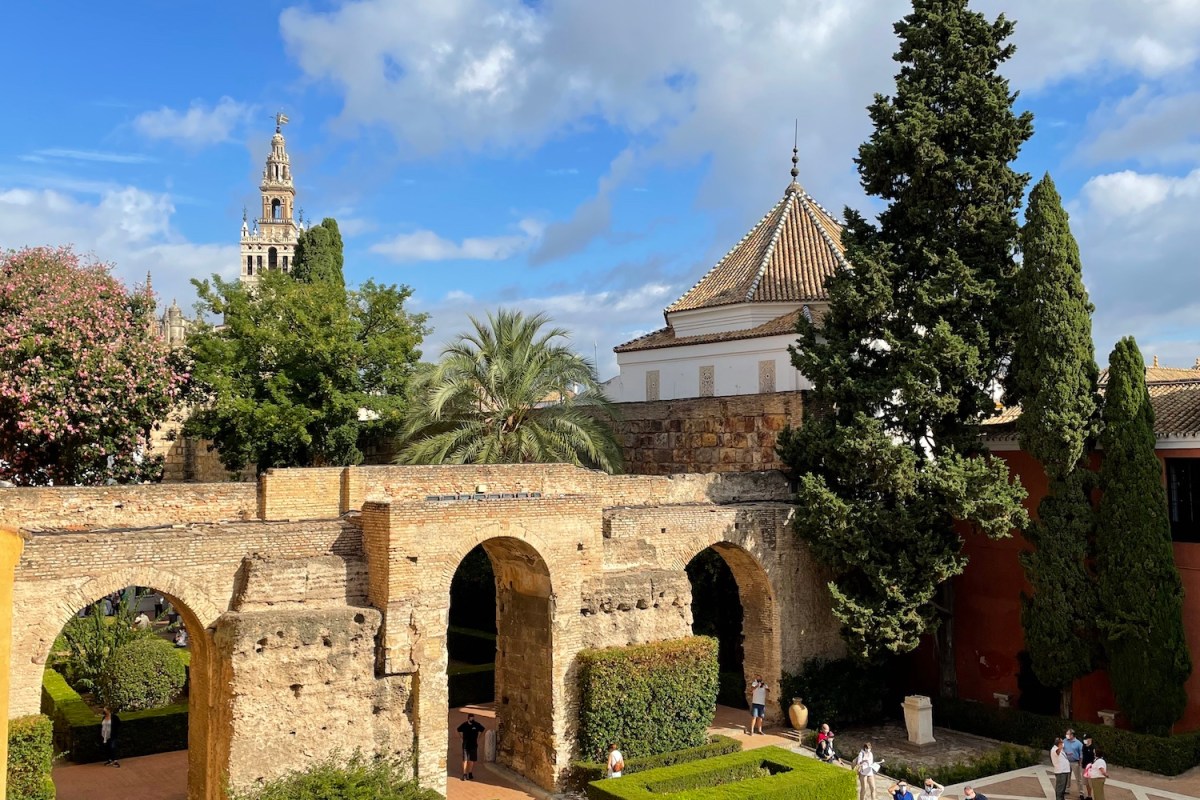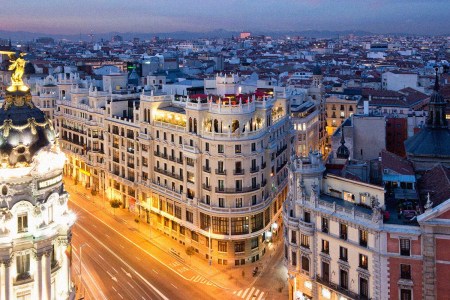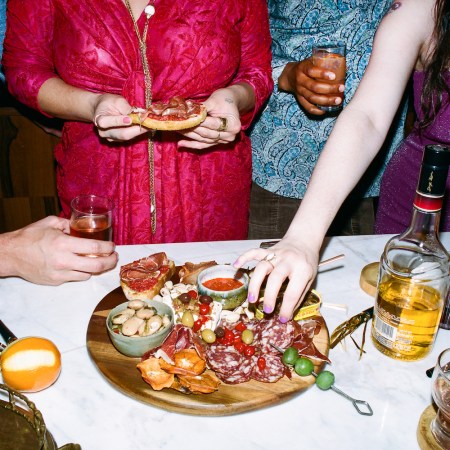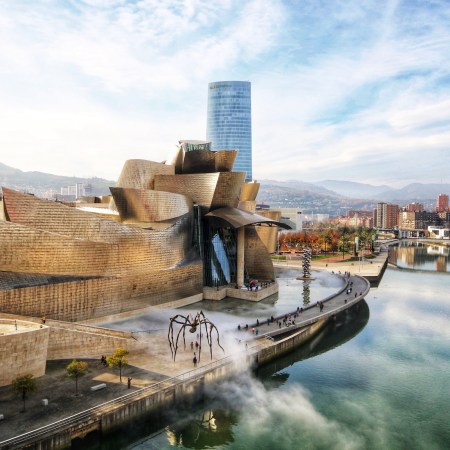Perched on the southern edge of Europe, just across the water from North Africa, the Andalusian region of Spain is a fascinating blend of captivating cultures and living history. A crossroads for multiple civilizations for thousands of years, its Moorish palaces were featured in Game of Thrones, and the Spanish fleets set sail for the New World from its ports. After a few weeks there, my wife and I left energized. Fueled by tart Rebujito cocktails, fiery flamenco songs, endless plates of Jamón Ibérico and azure skies. From the first night we sat down for drinks outside a crowded tapas joint in Seville and the family next to us immediately engaged us in conversation, we felt welcome in this sun-soaked region.
One of the best ways to experience it is to take a week-long road trip through its heart, the cities of Seville, Córdoba and Granada. While you can jump on a bus, we recommend renting a car — a convertible, specifically — and hitting the pavement. Easy-to-navigate roads wind through numerous whitewashed villages oozing with history and their own modern playfulness.
Each city has played a pivotal part in the region’s narrative and offers no shortage of sites and smiles to soak up. By spending a few days in each of them, you can spend your mornings exploring and squeeze in a siesta when the temps top out and the streets empty. Then, after the sun disappears, you can settle into a chair at one of the abundant weathered tables filling their streets and patios for dinner. Tasty Solomillo al whisky (an amazing pork tenderloin dish), crisp Cruzcampo cervezas, and a host of other culinary delights and beverages will make the hours slide by as you soak up the lively energy surrounding you. If your tank is still full after your meal, crusty dive bars can keep you entertained into the early hours.
Part of what makes Andalusia and its people so special is its complex blend of histories. Straddling the Atlantic and Mediterranean, both the Muslim and Christian worlds have held sway here. After centuries of Roman rule, in 711, the Umayyad conquest of Hispania began and established al-Andalus, a collection of various Muslim states controlling the Iberian Peninsula. Their reign ended when the Reconquista, launched by the Christian kingdoms in the north, culminated with the surrender of the Granada in 1492.
The fingerprints of past civilizations are still quite evident. Ancient Roman bridges and roads lead to neighborhoods brimming with houses that still display their Arabic origins with hidden courtyard gardens and calming fountains. The stunning gardens of the Nasrid sultans’ palaces, filled with their delicately carved arches and soaring ceilings, became the homes of kings and queens after the reconquest. The riches of the returning Spanish treasure fleets of the 15th and 16th centuries turned it into one of the most economically powerful regions on the planet.
But the most intriguing part of Andalusia today is its inhabitants. From the nattily dressed residents of Seville to the sunbaked farmers tending to their flowing fields of sunflowers lining the many rivers in the region, their broad smiles and friendly greetings set the tone. At no other time is this more evident than during the nonstop fiestas that seem to continuously occur, especially in April when each city hosts its own raucous feria, or fair. Whole neighborhoods of colorful striped tents are erected at fairgrounds, and from midday until the early hours, they are packed with crowds eating, drinking, dancing and socializing. The pageantry of women in their brilliant traditional traje de gitana dresses and the caballeros on their horses are a sight.
During your journey, a week will quickly evaporate as you move from city to city. Start and end in Seville, the capital and largest city in Andalusia, because you can easily fly in and out and rent a car. Then you can head to Córdoba with its magnificent Mosque-Cathedral and finally to Granada, where the last sultans ruled from the Alhambra Palace, to fully appreciate the culture that flowers here.
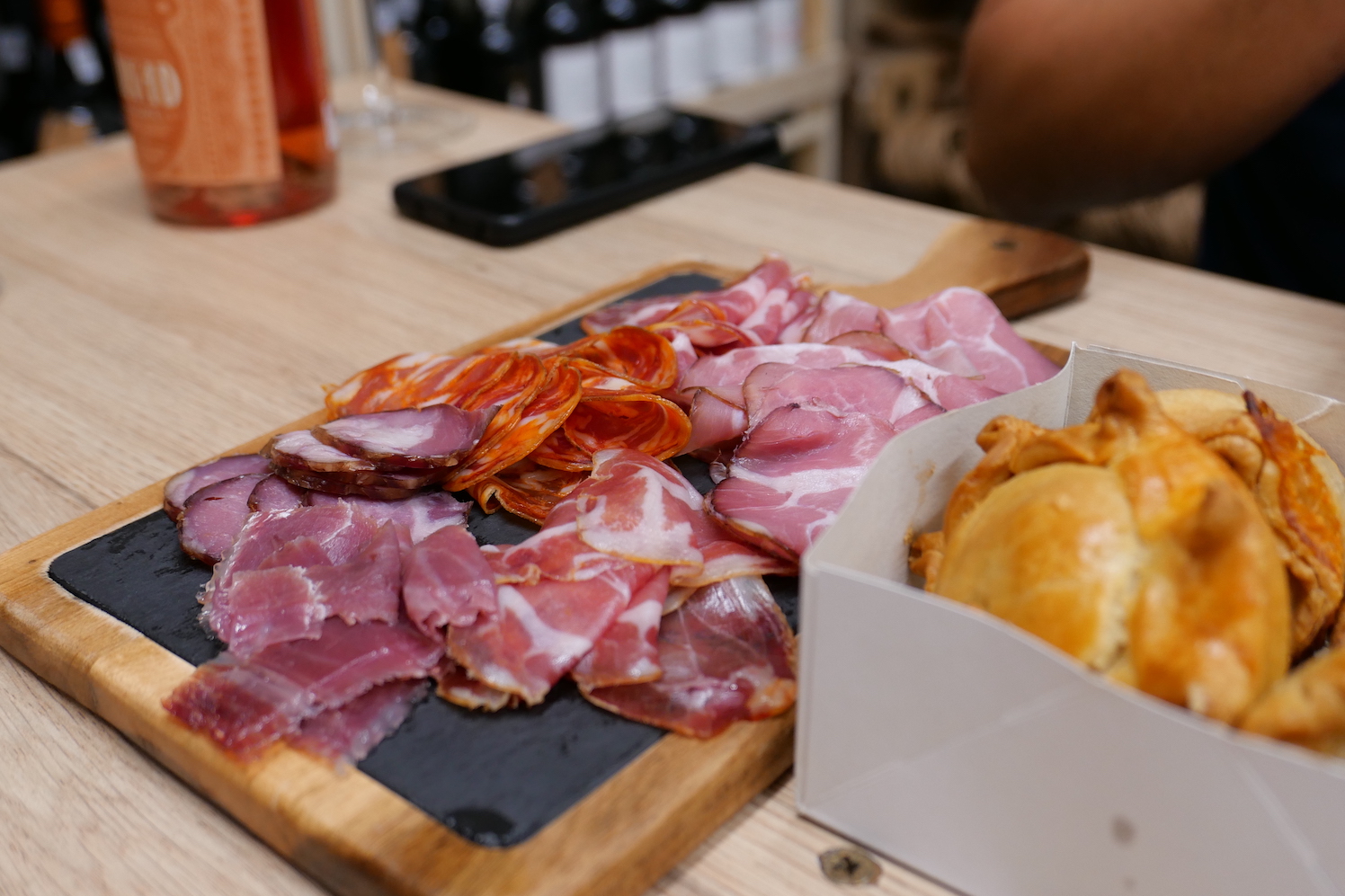
Seville
The bustling city of Seville is said to have been founded by Hercules after he sailed through the nearby Strait of Gibraltar. Whether or not you take stock in ancient myths, the energy and history imbued into its winding streets are larger than life. It was an important Roman center, the Moorish sultans held court there and the golden age of the Spanish empire is evident throughout.
Nowhere is that more evident than in the Real Alcazar Palace and its labyrinth of gardens in the city’s heart. The amalgamation of Arabic and Christian influences that co-exist inside its walls is fascinating. Be sure to get there early in the morning or book a private night tour to avoid the bustling crowds arriving each afternoon.
While you could easily spend all your time roaming its celebrated city center with its famed cathedral, museums, gleefully chaotic old town and host of other sights, make sure you venture farther afield. Surrounded by easily walkable and bikeable neighborhoods each packed with its own gems, you won’t be bored, especially at night when its residents fill the streets.
What to Eat and Drink
While the sheer number of tapas offered in the city can be overwhelming, there are a few you shouldn’t miss. The lightness that defines espinacas con garbanzos, a spinach and chickpea dish that originated from the Moors, makes it an ideal midday snack. Dig into a plate of rabo de toro, a hearty stew made with oxtail, red wine and vegetables. Wash that all down with a glass of fino or manzanilla sherry, an Andalusian specialty. Delightfully dry, they are the perfect complement to an evening’s meal.
El Rinconcillo, founded in 1670 and one of the oldest tapas bars in Seville, exudes a delightfully funky vibe with its soaring oak beams crisscrossing the ceiling and its centuries-old bar. Offering a wide selection of traditional Spanish dishes and an extensive wine list, any meal there is memorable. Located in the trendy La Alameda neighborhood, the more modern conTenedor (which means “with fork”) offers a vegetarian twist on regional dishes. Their ever-changing menu features some of the freshest ingredients you will find.
Where to Stay
The elegant and intimate Legado Alcazar Hotel is the perfect spot to rest up between explorations in the city. Nestled next to the walls of the Real Alcazar Palace, each of its 18 rooms are different, several with terraces that overlook the Royal gardens next door. In its serene open courtyard, with parts of the original 12th-century walls exposed, you can enjoy a beverage and snack before or after heading out. Also important: spacious beds, relaxing soaking tubs and large windows that allow you to listen to the flocks of birds just over the walls as you fall asleep.
What to Do
Seville has so many layers, so it helps to have a guide to help you peel them back. The Magic of Seville is a local company that offers exclusive access to many of the city’s famous and hidden sites. Our full-day tour with Abraham started with a carriage ride and ended with us exploring Roman ruins.
Just across the Guadalquivir River from the city center, the neighborhood of Triana is a must-visit. Famous for its ceramics and flamenco culture, its beating heart is the beautifully boisterous Mercado de Triana. Open six days a week (closed Sundays), its stalls are brimming with fresh produce, meats, fish and a host of other sundries.
In a city that sometimes seems frozen in time, the creation of the Plaza de la Encarnación in the Alfalfa neighborhood garnered attention when it opened several years ago. Formerly a dilapidated car park, it is now home to the towering Metropol Parasol. Known locally as Las Setas (The Mushrooms), it consists of six massive wooden structures offering fantastic views of the city from its rooftop terrace.
How to Spend 7 Perfect Days in Madrid
World-class galleries, bohemian café culture and glamorous nightlife – here’s how to make the most of a visit to the Spanish capital.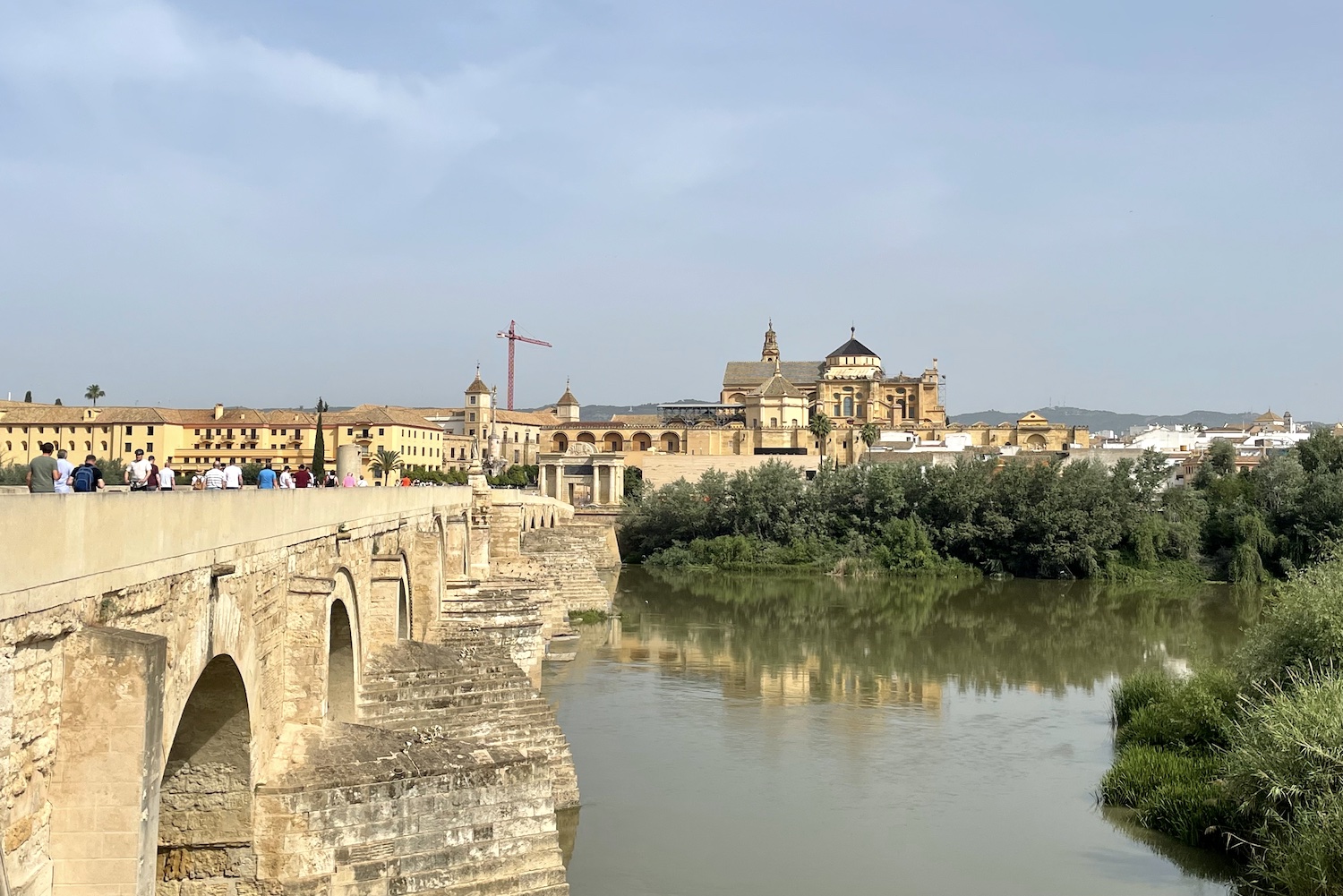
Córdoba
Surrounded by some of the world’s largest olive oil farms, the drive into Córdoba is a study in contrasts. The mellow greens of the trees are backdropped by the burnt umber soil from which they sprout. Even though it’s the third largest city in Andalusia, it doesn’t exude the same vigorous vibe as Seville, just two hours away. Instead, there is a peacefulness; maybe that’s been carried over from the famous Roman philosopher and stoic Seneca, who was born in the city.
It’s also home to the colossal architectural marvel, the Córdoba Mosque-Cathedral, which can quickly boggle the mind. One of the biggest mosque’s ever constructed, it was saved from destruction by King Ferdinand III after he retook the city in 1236. Instead, a soaring Renaissance Cathedral was raised in its middle, surrounded by a hypostyle prayer hall with more than 850 colorful soaring symmetrical columns. It’s a stunning hybrid structure that can easily swallow up hours if you choose to explore its countless nooks.
What to Eat and Drink:
Nothing is more refreshing during the typically warm afternoons in Córdoba than enjoying a bowl of salmorejo, a regional twist on gazpacho. Served cold, its tomato and garlic backbone are accentuated by local olive oil, bread, slices of hard-boiled egg and pieces of Iberian ham. Home to a whopping 17 restaurants listed in the Michelin Guide, finding a good meal in Córdoba isn’t hard. But because you have limited time, you want to pick something you know will be great. The farmhouse vibe of Bodegas Campos, part of a historic vineyard, sets the tone the moment you enter. Serving both lunch and dinner, you can sip their excellent wine and have some of the best Iberian pork cheeks ever.
If you want something more elegant, book a courtyard table at Arbequina, located at the Hospes Palacio del Bailío hotel. Listed in the Michelin Guide, its chef Javier Moreno brings an international twist to local favorites. His freshly made pasta is excellent, and any octopus dish he offers is worth trying.
Make sure you eat as many pastel cordobés as possible. A city specialty, it’s a flaky, crusty flavor bomb filled with sweet pumpkin puree. They are the perfect snack or dessert, especially when the temps climb.
Where to Stay
You’d be hard-pressed to find a better hotel in Andalusia than the aforementioned Hospes Palacio del Bailío. As the first five-star hotel to open in the city, it was constructed on the remains of a Roman villa, and you can see the remnants through a glass floor in the dining room. Incorporating parts of a 16th-century home, its numerous courtyards, outdoor pool and extensive spa will allow you to unwind when you’re not relaxing in one of its spacious rooms.
What to Do
The best way to explore the city is from a bike seat, especially while doing a half-day tour with Bike Tour Córdoba. Owned and operated by a gregarious Dutch and Spanish family who’s lived in the city for decades, a half-day tour with them is fun, informative and filled with hidden knowledge.
While the Palacio de Viana doesn’t look like much from the outside, don’t be fooled. Often overlooked by tourists, just inside its nondescript doors is one of the more unusual museums you will ever see. The 15th-century residence features a grand collection of patios and gardens that will transport you back to a time when royalty roamed its grounds.
The city’s residents host the Feria de Los Patios every May throughout the San Basilio quarter. Patios that are normally closed are opened to the public as everyone tries to outdo each other with elaborate designs of flowers and plants. If you can’t make it to Córdoba then, not to worry — many patios are open to the public year-round, some for a nominal fee. The centerpiece of their love affair with blossoms is the Calleja de las Flores (Flower Alley) in the Jewish Quarter. A dizzying array of flowers bracket a small street lined with traditional houses.
Granada
Nestled next to the Sierra Nevada Mountains, Granada was the final Moorish capital in Spain. Looming over its medieval old town, the sprawling Alhambra Palace, filled with intricate mosaics and Nasrid architecture, will transport you to a different time, especially if you tour it in the evenings. Be sure to pack your most comfortable walking shoes — its hilly landscape will make you earn your steps, especially if you take a quick day trip to the nearby Sierra Nevada National Park, the largest in Spain.
Home to eight universities, there is a youthful playfulness infused into Granada’s soul as students and educators from across the globe wander its streets. Throughout the city, especially from within the Sacromonte Caves — a neighborhood literally cut into the Valparaiso Hill that the city straddles — the sounds of soulful guitar and colorful cante flamenco cut through the night skies. Granada is a colorful puzzle box filled with merriment.
What to Eat and Drink
Known for serving gratis tapas with alcohol, Granada is the ideal spot to belly up to the bar and dive in. It’s also the perfect place to feast on ensaladilla rusa, a cold potato salad mixed with shrimp, crab, tuna and possibly some veggies. Or dive into crunchy croquetas de jamón, a gooey fried joy often filled with bits of locally made Trevélez ham.
Tucked into a quiet corner of the historic city center, El Bar de Fede is a welcome spot to rest and recover. Its attentive staff will keep the tapas coming while you enjoy a drink. Try the Alhambra Especial pilsner from a local brewer.
The Albaicín, an ancient Moorish neighborhood clinging to a hill just across the Darro River from the Alhambra, has excellent restaurants offering fantastic views. Grab an outside table at Carmen Verda Luna as the sun sets, and dig into your dinner as the palace is bathed in light.
Where to Stay
In a city filled with rentals and fine hotels, there is one clear winner for where to lay your head at night — Parador de Granada, the only hotel allowed to operate inside the Alhambra. Each of its rooms, spread throughout a former Catholic monastery, offers comfort and brims with character. Plus, the chance to sit on its magnificent terrace and soak up the surroundings with no crowds and a beverage in-hand is unparalleled.
What to Do
While visiting the palace is a must, don’t neglect the attached Generalife gardens. Designed to offer the Nasrid rulers an oasis of calm, they have inspired countless garden designers since and brim with colors and life, especially in the cooler months.
If you blink, you could miss the entrance to the Casa-Museo Max Moreau. Hidden behind a small gateway is the serene home of the 20th-century Belgium painter and composer. Spread over several levels, its numerous patios and rooms offer a glimpse into his life alongside a selection of his artwork.
Walking through the tight Calle de la Calderería Nueva, you can quickly feel transported to a different era. Affectionately known by the city’s residents as “Little Morocco,” many of its tiny shops are filled with brightly colored wares from North Africa. The numerous Moorish tea houses offer strong cups of tea and snacks.
As my wife and I pulled into the rental car return at the Aeropuerto de Sevilla-San Pedro after spending the morning roaming the impressive Parque de María Luisa, we couldn’t help but smile. The woman checking our car in stopped scanning the moment she found out we were visitors from America. For five minutes she asked us about our week exploring Andalusia and gave us suggestions for the next time we return. She loved her home, and so did we, and we will be back soon.
This article appeared in an InsideHook newsletter. Sign up for free to get more on travel, wellness, style, drinking, and culture.
